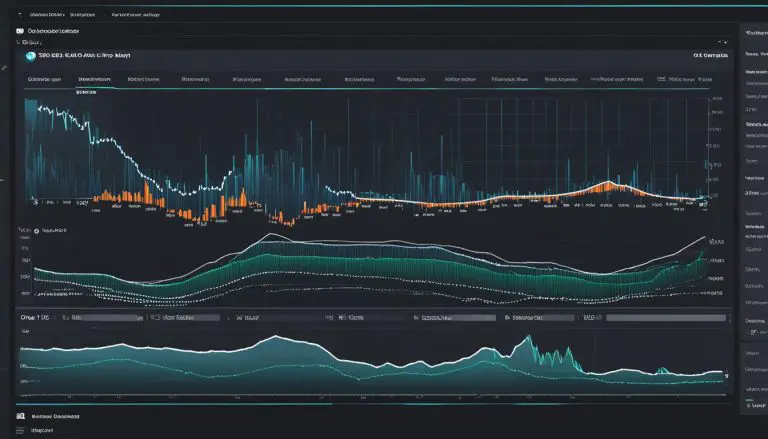Unraveling the Mystery: What is PHP Explained Simply
As a developer, you may have come across the term PHP in your web development journey. But what exactly is PHP, and why is it so popular? In this article, I’ll provide you with a simple introduction to PHP, its basics, and why it is considered a powerful programming language in web development.
Key Takeaways:
- PHP is a widely used programming language in web development.
- It is known for its simplicity, versatility, and ease of integration.
- PHP is a server-side scripting language used to create dynamic web pages and applications.
- It has a large community and is constantly evolving, thanks to its open-source nature.
- Learning PHP can be valuable for both beginners and experienced developers.
The Features and Advantages of PHP
PHP offers a range of features and advantages that make it a popular choice for web development. Let’s explore some of these key features:
- Easy to learn and use: PHP has a relatively simple syntax and is easy for beginners to pick up and start using.
- Cross-platform compatibility: PHP can run on various operating systems, including Windows, Linux, and macOS.
- Database integration: PHP has built-in support for popular databases like MySQL, allowing developers to easily connect and interact with databases.
- Scalability: PHP can handle high traffic and large-scale applications with ease, making it suitable for websites of all sizes.
- Extensibility: PHP has a vast collection of extensions and libraries that enhance its functionality and allow developers to add new features to their applications.
These features provide developers with the flexibility and tools needed to create dynamic and interactive websites. PHP’s simplicity and versatility make it an ideal choice for both beginners and experienced developers alike.
Advantages of PHP
In addition to its features, PHP also offers several advantages that contribute to its popularity in web development:
- Open-source: PHP is an open-source language, meaning it is free to use and has a large community of developers who contribute to its growth and improvement.
- Community support: The PHP community is active and supportive, providing extensive documentation, forums, and resources for developers.
- Ease of integration: PHP can be easily integrated with other technologies and frameworks, allowing developers to leverage existing tools and resources.
- Cost-effective: PHP’s open-source nature eliminates the need for expensive licenses, making it a cost-effective choice for web development projects.
- Wide adoption: PHP is widely adopted by businesses and organizations around the world, ensuring the availability of skilled PHP developers and job opportunities.
By leveraging these advantages, developers can harness the power of PHP to build robust and efficient web applications.
Table: PHP Features and Advantages
| Features | Advantages |
|---|---|
| Easy to learn and use | Open-source |
| Cross-platform compatibility | Community support |
| Database integration | Ease of integration |
| Scalability | Cost-effective |
| Extensibility | Wide adoption |
PHP Syntax and Code Examples
When working with PHP, it’s essential to understand the basic syntax and structure of the code. PHP code is enclosed within <?php and ?> tags, indicating the start and end of PHP code blocks. Let’s take a look at an example of basic PHP syntax:
2
3
4
$name = "John Doe";
echo "Hello, " . $name . "!";
?>
In the above example, we declare a variable $name and assign it the value “John Doe. We then use the echo statement to output the greeting message, concatenating the variable $name within the string.
PHP is a flexible language that allows for various programming constructs, such as loops, conditionals, and functions. Here’s an example of a loop in PHP:
2
3
4
5
for ($i = 1; $i <= 5; $i++) {
echo "Number: " . $i . "<br>";
}
?>
In the above example, we use a for loop to iterate from 1 to 5. Within each iteration, we output the current number using the echo statement. The <br> tag is used to create a line break after each number.
Common PHP Code Examples
Here are some common PHP code examples that can be used as building blocks for web development:
- Handling Form Data: PHP provides functions and variables to retrieve and process data submitted through HTML forms.
- Database Interaction: PHP has built-in support for various databases, making it easy to connect, query, and manipulate data.
- File Handling: PHP allows for reading, writing, and manipulating files on the server or the user’s device.
- Session Management: PHP enables the creation and management of user sessions, allowing for personalized experiences and secure authentication.
- Error Handling: PHP provides mechanisms to handle and display errors gracefully, ensuring smooth user experiences.

| Function | Purpose |
|---|---|
| strpos() | Returns the position of the first occurrence of a substring in a string |
| strlen() | Returns the length of a string |
| array_push() | Adds one or more elements to the end of an array |
| file_get_contents() | Returns the contents of a file as a string |
In the table above, we showcase some common PHP functions and their purposes. These functions can be utilized to perform various operations in PHP programming.
PHP Frameworks for Web Development
When it comes to web development in PHP, there are several frameworks that provide developers with a structured and efficient way to build applications. These frameworks offer pre-written code and a set of tools that simplify the development process, allowing developers to focus on building the core functionality of their applications.
One popular PHP framework is Laravel. It is known for its elegant syntax and powerful features, making it a favorite among developers. With Laravel, developers can easily handle routing, database operations, and templating. It also provides a robust ecosystem of packages and libraries, allowing developers to extend their applications with ease.
Another widely used PHP framework is Symfony. Symfony follows the MVC (Model-View-Controller) architectural pattern, providing a solid foundation for building scalable and maintainable applications. It offers a wide range of components and bundles that can be used to handle various tasks, such as form handling, authentication, and caching.
For those looking for a lightweight and fast PHP framework, Slim is a popular choice. It is designed to be minimalistic yet powerful, allowing developers to quickly build RESTful APIs and small-scale web applications. Slim provides a simple routing system, middleware support, and easy integration with popular PHP packages.
These are just a few examples of the many PHP frameworks available for web development. Each framework has its own strengths and features, so it’s important to choose the one that best suits your project requirements. Whether you’re building a simple website or a complex web application, PHP frameworks can greatly streamline the development process and help you deliver high-quality applications in less time.
PHP Online Courses and Tutorials
When it comes to learning PHP, there are numerous online resources available that cater to both beginners and experienced developers. Whether you prefer tutorials or comprehensive courses, these platforms offer a variety of learning options to suit your needs. Here are some popular platforms for learning PHP online:
- Udemy: Udemy is a well-known online learning platform that offers a wide range of PHP courses. From beginner-friendly tutorials to advanced topics, you can find courses tailored to your skill level and learning goals.
- Codecademy: Codecademy provides interactive PHP tutorials that allow you to learn by coding in a hands-on manner. Their step-by-step approach makes it easy to grasp the fundamentals of PHP programming.
- PHP.net: The official PHP website, PHP.net, offers comprehensive documentation and tutorials for learning PHP from scratch. It covers everything from basic syntax to advanced concepts, making it a valuable resource for self-guided learning.
- Lynda.com: Lynda.com (now LinkedIn Learning) offers a wide range of PHP courses taught by industry experts. Their video tutorials provide in-depth explanations and real-world examples to help you enhance your PHP skills.
By exploring these platforms, you can gain a solid foundation in PHP and stay updated with the latest developments in web development. Whether you prefer structured courses or self-paced tutorials, the online learning options for PHP are plentiful.
| Platform | Course Types | Highlights |
|---|---|---|
| Udemy | Video courses, tutorials | Wide range of PHP courses available |
| Codecademy | Interactive tutorials | Hands-on learning approach |
| PHP.net | Documentation, tutorials | Official PHP resource with comprehensive content |
| Lynda.com | Video courses, tutorials | Expert-led instruction with real-world examples |
PHP in Web Development Projects
PHP is a versatile programming language that is widely used in web development projects for various purposes. Its flexibility and scalability make it an ideal choice for creating dynamic and interactive websites. Here are some common use cases of PHP in web development:
Backend Development
One of the primary uses of PHP is for backend development. PHP allows developers to create server-side logic and handle tasks such as data processing, form handling, and database interactions. It offers robust libraries and frameworks that simplify the development process and enable the creation of efficient and secure web applications.
Content Management Systems
PHP is the backbone of many popular content management systems (CMS) such as WordPress, Joomla, and Drupal. These CMS platforms leverage the power of PHP to manage and publish content, customize website layouts, and extend functionality through plugins and themes. PHP’s flexibility and extensive community support make it an ideal choice for building dynamic and user-friendly CMS websites.
E-commerce Websites
PHP is widely used in the development of e-commerce websites. It enables developers to handle crucial aspects such as product catalog management, shopping cart functionality, secure payment gateways, and order processing. PHP frameworks like Magento and WooCommerce provide robust tools and features specifically designed for building online stores.
Web Application Development
PHP is well-suited for building web applications of all sizes and complexities. It offers a wide range of frameworks such as Laravel, Symfony, and CodeIgniter, which provide the necessary tools and libraries to streamline the development process. These frameworks ensure scalability, security, and maintainability, allowing developers to create robust and high-performance web applications.
Whether it’s backend logic, content management, e-commerce, or web applications, PHP plays a vital role in various aspects of web development projects. Its versatility, extensive community support, and rich ecosystem of frameworks make it a preferred choice for developers worldwide.
PHP’s Role in Server-Side Programming
When it comes to server-side programming, PHP plays a crucial role in powering dynamic and interactive websites. As a server-side scripting language, PHP is responsible for executing code on the server before delivering the final HTML to the user’s browser. This process enables PHP to handle various server-side tasks and deliver dynamic content tailored to each user.
PHP’s server-side capabilities are extensive, allowing developers to perform a wide range of operations. With PHP, you can interact with databases to store and retrieve data, handle form submissions, perform calculations, manipulate files, and much more. This versatility makes PHP an ideal choice for developing robust and feature-rich web applications.
Moreover, PHP’s widespread use in server-side programming is attributable to its ease of integration. It seamlessly integrates with popular web servers like Apache and Nginx and supports multiple platforms, including Windows, Linux, and macOS. PHP also boasts excellent compatibility with database systems such as MySQL, making it a reliable choice for managing backend data.
Overall, PHP serves as a powerful scripting language for server-side programming, offering developers the flexibility and functionality needed to create dynamic and interactive websites. Its extensive capabilities and wide-ranging compatibility make PHP a go-to choice for building web applications that deliver a seamless user experience.
| Benefits of PHP’s Server-Side Programming |
|---|
| 1. Versatility in handling server-side tasks |
| 2. Seamless integration with popular web servers |
| 3. Cross-platform compatibility |
| 4. Excellent database integration |
| 5. Facilitates dynamic content delivery |
Benefits of Using PHP in Web Development
When it comes to web development, PHP offers a multitude of benefits that make it a top choice for developers. Let’s explore some of the advantages of using PHP:
Simplicity and Ease of Learning
PHP has a straightforward syntax and is relatively easy to learn, even for beginners. Its simplicity allows developers to quickly grasp the basics and start building web applications. With a vast collection of online tutorials and courses available, learning PHP has never been easier.
Wide Community Support
PHP has a massive and active community of developers who contribute to its growth and improvement. This means that there is a wealth of resources, forums, and libraries available, making it easier to find support and solutions for any coding challenges you may encounter.
Efficiency and Performance
PHP is known for its efficiency and performance in web development. It can handle high traffic and large-scale applications without sacrificing speed or performance. With various optimization techniques and caching mechanisms, PHP ensures that your website or application runs smoothly and efficiently.
Additionally, PHP’s seamless integration with databases, such as MySQL, allows for efficient data handling and manipulation. This makes it an ideal choice for projects that require extensive database interaction.
Conclusion
In conclusion, PHP is a powerful and widely used programming language for web development. Its simplicity and versatility make it a preferred choice among developers. PHP’s ability to interact with databases, handle form data, and perform various calculations and manipulations make it a valuable tool for creating dynamic web pages and applications.
With its cross-platform compatibility and scalability, PHP is suitable for websites of all sizes. Its extensive collection of extensions and libraries further enhance its functionality, allowing developers to add new features to their applications with ease.
Whether you’re a beginner learning the basics or an experienced developer, PHP provides the necessary tools and resources to create dynamic and interactive websites. Exploring PHP tutorials and courses can help enhance your skills and keep you updated with the latest developments in web development.
FAQ
What is PHP?
PHP is a popular programming language commonly used in web development. It is known for its simplicity and versatility.
What are the features of PHP?
PHP offers features like easy learning curve, cross-platform compatibility, database integration, scalability, and extensibility.
How does PHP syntax look like?
PHP syntax follows a similar structure to other programming languages and uses tags to indicate the beginning and end of PHP code.
What are some popular PHP frameworks?
Some popular PHP frameworks are Laravel, Symfony, and CodeIgniter.
Where can I learn PHP online?
You can find online tutorials and courses on platforms like Codecademy, Udemy, and W3Schools.
What are some common use cases of PHP?
PHP is used for creating dynamic web pages, handling form data, interacting with databases, and performing calculations and manipulations.
How does PHP work in server-side programming?
PHP is a server-side scripting language, which means that PHP code is executed on the server before the final HTML is sent to the user’s browser.
What are the benefits of using PHP in web development?
Some benefits of using PHP include its simplicity, versatility, large community support, and the availability of extensive extensions and libraries.
What is the conclusion of this article?
The article provides an overview of PHP, its features, syntax, frameworks, online learning resources, use cases, role in server-side programming, benefits, and concludes that PHP is a powerful language for web development.
- About the Author
- Latest Posts
Mark is a senior content editor at Text-Center.com and has more than 20 years of experience with linux and windows operating systems. He also writes for Biteno.com






